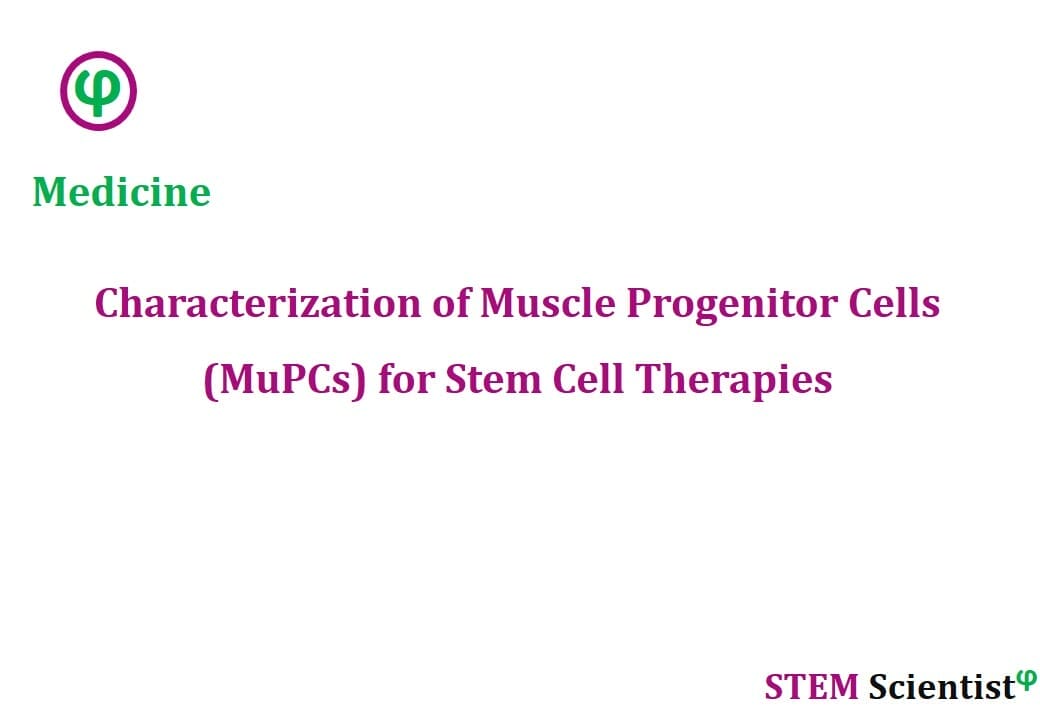
The following study was conducted by Scientists from Department of Clinical Application, Center for iPS Cell Research and Application (CiRA), Kyoto University, Kyoto, Japan; Department of Cell Growth and Differentiation, Center for iPS Cell Research and Application (CiRA), Kyoto University, Kyoto, Japan; Central Institute for Experimental Animals, Kawasaki, Japan; Department of Cell Growth and Differentiation, Center for iPS Cell Research and Application (CiRA), Kyoto University, Kyoto, Japan; Department of Clinical Application, Center for iPS Cell Research and Application (CiRA), Kyoto University, Kyoto, Japan. Study is published in Stem Cell Reports Journal – Cell Press Publishing as detailed below.
Stem Cell Reports Journal – Cell Press Publishing (2021)
Characterization of hiPSC-Derived Muscle Progenitors Reveals Distinctive Markers for Myogenic Cell Purification Toward Cell Therapy
Highlights
- MYF5 and PAX7 mark different populations of hiPSC-MuPCs
- RNA-seq of MYF5+ cells reveals CDH13 and FGFR4 as hiPSC-MuPC markers
- CDH13+ and FGFR4+ hiPSC-MuPCs contribute to regeneration in mdx mice
- MYF5 regulates CDH13 expression by binding to its promoter region
Summary
The transplantation of muscle progenitor cells (MuPCs) differentiated from human induced pluripotent stem cells (hiPSCs) is a promising approach for treating skeletal muscle diseases such as Duchenne muscular dystrophy (DMD). However, proper purification of the MuPCs before transplantation is essential for clinical application. Here, by using MYF5 hiPSC reporter lines, we identified two markers for myogenic cell purification: CDH13, which purified most of the myogenic cells, and FGFR4, which purified a subset of MuPCs. Cells purified with each of the markers showed high efficiency for regeneration after transplantation and contributed to the restoration of dystrophin expression in DMD-immunodeficient model mice. Moreover, we found that MYF5 regulates CDH13 expression by binding to the promoter regions. These findings suggest that FGFR4 and CDH13 are strong candidates for the purification of hiPSC-derived MuPCs for therapeutical application.
Source:
Stem Cell Reports Journal – Cell Press Publishing
URL: https://www.cell.com/stem-cell-reports/fulltext/S2213-6711(21)00134-X
Citation:
Nalbandian, M., Zhao, M., Sasaki-Honda, M., Jonouchi, T., Lucena-Cacace, A., Mizusawa, T., Yasuda, M., Yoshida, Y., Hotta, A., Sakurai, H., 2021. Characterization of hiPSC-Derived Muscle Progenitors Reveals Distinctive Markers for Myogenic Cell Purification Toward Cell Therapy. Stem Cell Reports 16(4), 883-898.


